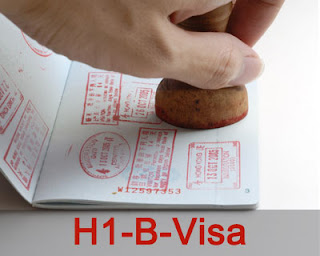America has always projected itself as a crusader for global free trade and railed against India's protectionist policies, but the boot is now on the other foot. Prime Minister Narendra Modi reminded the U.S. that the free quotient in free trade apparently fluctuates with U.S. self-interest while protesting against America doubling the cost of temporary work visas used heavily by India's IT industry.
When President Barack Obama called Modi this week to thank him for helping negotiate the Paris climate change agreement, Modi quickly turned the conversation to the Indian IT industry's concern over how a new U.S bill passed on Friday makes H-1B and L-1 visas horrendously expensive.
Unfortunately, India's concerns are likely to fall on deaf ears, because its political poison in America to oppose funds for 9/11 victims. It is also more than a little politically convenient in the circus to the U.S. elections to pillory outsourcing; and somehow stick India with paying the bills by increasing the cost of H1-B and L-1 visas.
The U.S is doubling the cost of H-1B and L-1 visas for Indian workers by $2,000, adding a roughly $400 million annual bill to the Indian IT industry, according to a trade body.
New H-1B and L-1 Visa Cost Structure
The U.S. Congress on Friday passed a bill named the “9/11 Health and Compensation Act” to fund continued healthcare for first-responders and a biometric entry and exit tracking system. To keep those dollars flowing, the Bill has increased the amount businesses must pay to secure an H1-B or L1 visa. The U.S has doubled the fee for H-1B visas for every new applicant to $4,000 from $2,000, and $4,500 for every L-1 visa, which is needed for intra-company transfers, from $2,250.
Indian firms such as Infosys, Wipro, Cognizant and Tata Consultancy Services have set up large U.S. offices with American employees to be closer to clients, but there is always an offshore angle. They rely heavily on H-1B visas to allow Indian staff to fly to the U.S. when they are needed for face-to-face consultations and to work on projects in the U.S. as part of their “global service delivery” model.
Indian companies naturally need some portion of their staff on-site in the U.S. to understand the systems and specifications of their American clients, which is why they are heavy H-1B users. US companies often contractually require Indian tech firms to place employees on site to troubleshoot. The higher visa costs will deal a body blow to thiswhole business model.
These changes will be in force for the next 10 years, and are likely to cost the Indian IT industry an estimated $400 million a year, according to NASSCOM.
The hiked fee of $4,000 and the new levy of $4,500 will be charged for extensions too — an H-1B visa is given for three years, which can be extended for the same period, but just once. Similarly, a L-1 is also valid for three years and can be extended up to the maximum of five and seven years, for different categories under this visa type.
Protectionist Legislations Galore
India’s IT industry is once more a punching bag for U.S. politicians. Ted Cruz, a contender for the Republican presidential nomination, wants to bring down the number of H-1B visas from the current 85,000 to 70,000 a year.
There are other legislations in the pipeline that seek to cut down the hiring of foreign workers specially on H-1B visas, which, critics believe are displacing American workers. In November, Chuck Grassley, an Iowa Republican and chairman of the Senate Judiciary Committee, and Illinois Democrat Dick Durbin introduced a bill that would require all companies that want to hire workers under H-1Bs to first try to hire U.S. citizens.
In addition, firms that employ more than 50 people and have more than half of their staff on H-1B and L-1 visas would be barred from hiring new workers on H-1Bs. Not all or any of these may become law, but the visa fee hikes will.
India Inc Fires Back
Indian tech leaders argue that fixing the H-1B flaw is in the interest of increasing India-US trade by five times. Overall, software services accounted for $82 billion worth of exports in the fiscal year ending in March 2015, according to the Reserve Bank of India. And the U.S. market is critical: almost 60 percent of that figure came from North America.
Azim Premji, chairman of Wipro, India's third-largest outsourcing services company, earlier pointed out that contrary to misconception, “Indian IT companies in the U.S. in the past five years have created American jobs of at least 35,000 and today support 280,000 jobs in the U.S. Three out of these four jobs are held by Americans. Contrary to this, a leading American services company in the last six years has reduced 36,000 American workers.”
Indian companies are steadily creating more jobs in America and have paid more than 15 billion in taxes to the US treasury, according to Nasscom.
India has just relaxed foreign investment limits in multiple areas ranging from defense to insurance but the U.S. visa hike may set off tit-for-tat reprisals.




